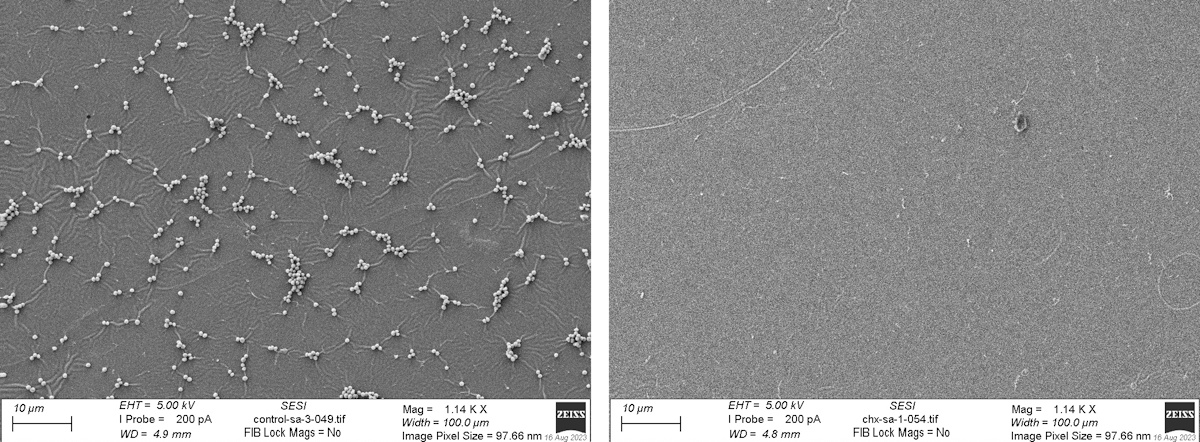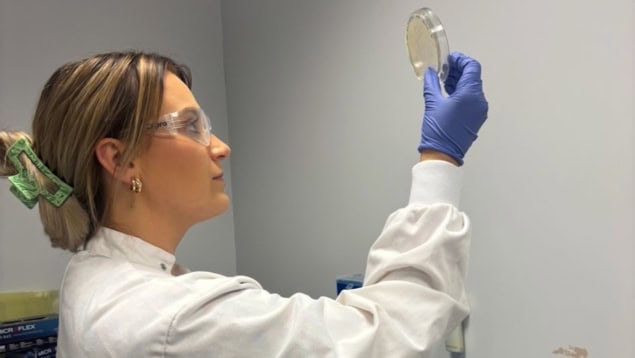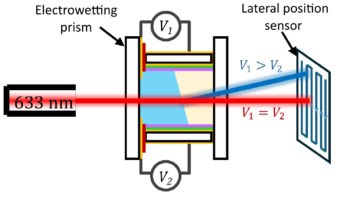
Scientists have created a novel antimicrobial coating that, when mixed with paint, can be applied to a range of surfaces to destroy bacteria and viruses – including particularly persistent and difficult to kill strains like MRSA, flu virus and SARS-CoV-2. The development potentially paves the way for substantial improvements in scientific, commercial and clinical hygiene.
The University of Nottingham-led team made the material by combining chlorhexidine digluconate (CHX) – a disinfectant commonly used by dentists to treat mouth infections and by clinicians for cleaning before surgery – with everyday paint-on epoxy resin. Using this material, the team worked with staff at Birmingham-based specialist coating company Indestructible Paint to create a prototype antimicrobial paint. They found that, when dried, the coating can kill a wide range of pathogens.
The findings of the study, which was funded by the Royal Academy of Engineering Industrial Fellowship Scheme, were published in Scientific Reports.
Persistent antimicrobial protection
As part of the project, the researchers painted the antimicrobial coating onto a surface and used a range of scientific techniques to analyse the distribution of the biocide in the paint, to confirm that it remained uniformly distributed at a molecular level.
According to project leader Felicity de Cogan, the new paint can be used to provide antimicrobial protection on a wide array of plastic and hard non-porous surfaces. Crucially, it could be effective in a range of clinical environments, where surfaces like hospital beds and toilet seats can act as a breeding ground for bacteria for extended periods of time – even after the introduction of stringent cleaning regimes.
The team, based at the University’s School of Pharmacy, is also investigating the material’s use in the transport and aerospace industries, especially on frequently touched surfaces in public spaces such as aeroplane seats and tray tables.
“The antimicrobial in the paint is chlorhexidine – a biocide commonly used in products like mouthwash. Once it is added, the paint works in exactly the same way as all other paint and the addition of the antimicrobial doesn’t affect its application or durability on the surface,” says de Cogan.

The researchers also note that adding CHX to the epoxy resin did not affect its optical transparency.
According to de Cogan, the novel concoction has a range of potential scientific, clinical and commercial applications.
“We have shown that it is highly effective against a range of different pathogens like E. coli and MRSA. We have also shown that it is effective against bacteria even when they are already resistant to antibiotics and biocides,” she says. “This means the technology could be a useful tool to circumvent the global problem of antimicrobial resistance.”
In de Cogan’s view, there are also number of major advantages to using the new coating to tackle bacterial infection – especially when compared to existing approaches – further boosting the prospects of future applications.

Antimicrobial coating kills multi-resistant pathogens on the ISS
The key advantage of the technology is that the paint is “self-cleaning” – meaning that it would no longer be necessary to carry out the arduous task of repeatedly cleaning a surface to remove harmful microbes. Instead, after a single application, the simple presence of the paint on the surface would actively and continuously kill bacteria and viruses whenever they come into contact with it.
“This means that you can be sure a surface won’t pass on infections when you touch it,” says de Cogan.
“We are looking at more extensive testing in harsher environments and long-term durability testing over months and years. This work is ongoing and we will be following up with another publication shortly,” she adds.



